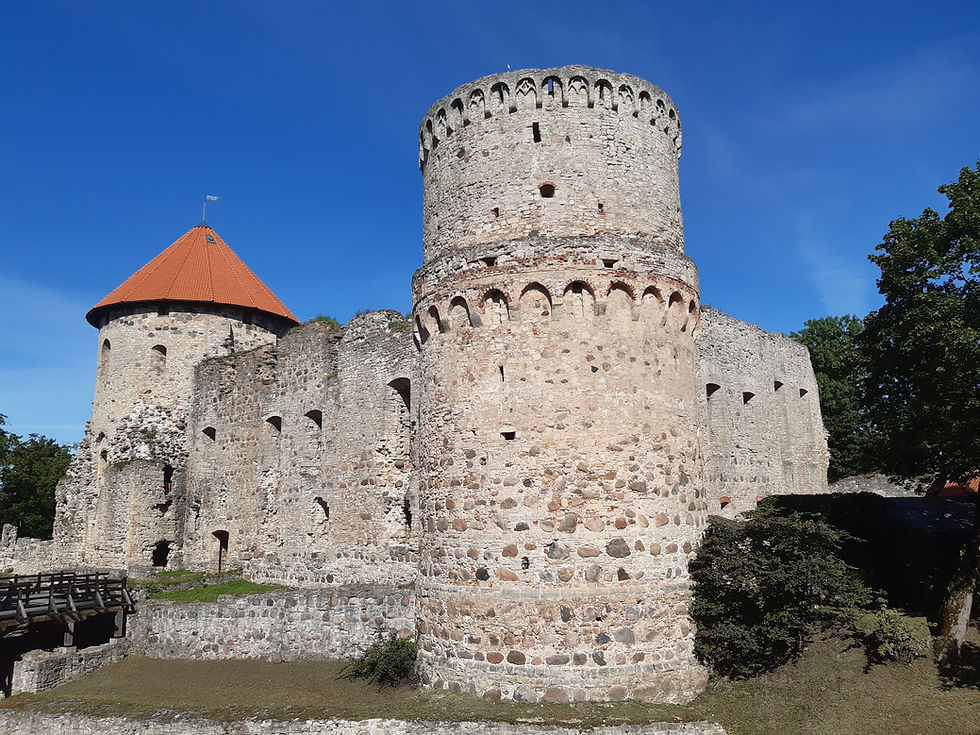The Early Years of the Hanseatic League and Lübeck’s Role in the Northern Crusades
- byrneside
- Dec 20, 2024
- 3 min read

The Hanseatic League, a confederation of merchant guilds and market towns in Northern Europe, played a pivotal role in shaping medieval trade and politics. While the League's golden age is often associated with the 14th and 15th centuries, its formative years in the late 12th and early 13th centuries laid the foundation for its later dominance. Central to this early phase was the city of Lübeck, which not only emerged as a key trade hub but also became a strategic base for the Northern Crusades.
The Hanseatic League traces its origins to the late 12th century, a period marked by the rapid growth of trade across the Baltic and North Seas. German merchants, seeking safer and more efficient trade routes, began to collaborate to protect their interests against piracy, political instability, and local restrictions. These early alliances formed the basis of what would later become the Hanseatic League.
Lübeck, founded in 1143 by Count Adolf II of Holstein and re-established by Henry the Lion in 1159, quickly rose to prominence due to its strategic location. Situated on the Trave River with access to the Baltic Sea, Lübeck served as a vital link between the trade networks of Western Europe and the resource-rich regions of Scandinavia, Russia, and the Baltic states. By the mid-13th century, Lübeck had become the most important of the Hanseatic cities, earning the moniker "Queen of the Hanse."
In addition to its role in trade, Lübeck played a significant part in the Northern Crusades, a series of military campaigns aimed at Christianizing the pagan peoples of the Baltic region. These crusades, sanctioned by the Pope, were driven by both religious zeal and economic interests.
Lübeck's location made it an ideal staging ground for crusading expeditions. Merchants and crusaders departing from Lübeck’s port carried supplies, troops, and religious fervour to the shores of the Baltic. The city's shipbuilding industry, which flourished due to its access to timber and skilled labour, provided the vessels necessary for these campaigns.
Moreover, Lübeck’s merchants saw the Northern Crusades as an opportunity to expand their trade networks and secure lucrative markets in newly Christianised regions. The establishment of fortified settlements and trading posts, such as Riga (founded in 1201), allowed Hanseatic merchants to dominate the trade in furs, amber, and other valuable goods from the Baltic hinterlands.
Lübeck’s involvement in the Northern Crusades was both a religious endeavour and a strategic move to bolster its political and economic standing. By supporting the crusades, Lübeck forged alliances with powerful entities like the Teutonic Order and the Bishopric of Riga. These alliances ensured the city remained a central player in regional trade and politics.
The mid-13th century saw the formalisation of merchant alliances that would evolve into the Hanseatic League. Lübeck, along with Hamburg, played a leading role in creating treaties and agreements to secure mutual protection and economic privileges. One of the earliest documented alliances was the 1241 pact between Lübeck and Hamburg, which set the stage for the broader Hanseatic network.
The early years of the Hanseatic League were a period of dynamic growth and strategic maneuvering, with Lübeck at the heart of these developments. Its dual role as a trade hub and a base for the Northern Crusades underscores the city's importance in shaping the medieval Baltic world. By the mid-13th century, Lübeck had not only solidified its position as a leader among Hanseatic cities, but also laid the groundwork for the League's expansion and enduring influence. This period stands as a testament to the interplay of commerce, politics, and religion in medieval Europe, with Lübeck exemplifying the transformative power of strategic geography and visionary leadership.




Comments